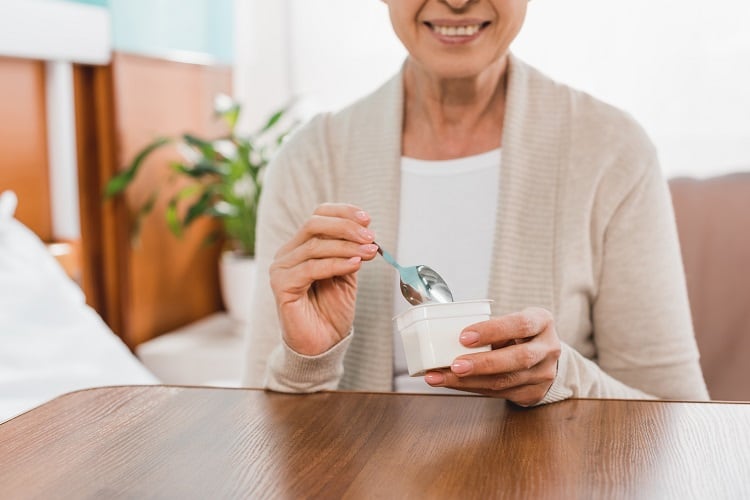“Today, food products for elderly diets are not easily available,” according to Daiva Leskauskaite from Lithuania’s Kaunas University of Technology (KUT).
A number of factors are at play here. Firstly, the elderly require a more nutrient-dense diet in order to meet nutritional needs. This is because as adults age, their energy demands ‘considerably’ decrease, alongside their appetite.
Secondly, where nutrient-dense food does exist, such as fortified foods, processing can reduce their effectiveness.
“During the fortification of food nutrients…bioactive compounds are added to the products. However, this method has several limitations since these bioactive compounds may be decomposed during processing and storage due to their high sensitivity to the temperature, oxygen, pH and other environmental concerns,” Leskauskaite told FoodNavigator.
Another challenge when adding bioactive compounds to foods is ensuring they are uniformly distributed throughout the product. “Usually the amounts of added compounds are very small,” she continued, meaning that encapsulation is currently regarded the best strategy for incorporating bioactive compounds into fortified food products.
Swallowing difficulties – or dysphagia – can also prevent some older people from ingesting foods or liquids. While dysphagia can affect people in any stage of life, age-related changes in swallowing physiology can be a predisposing factor for swallowing difficulties in the elderly. Age-related diseases may also contribute to such problems.
In an effort to overcome these hurdles, researchers from KUT and the Lithuanian University of Health Sciences teamed together to formulate micronutrient enriched food for the dysphagia diets of the elderly.
Micronutrient-loaded emulsion
Researchers from KUT’s department of food science and technology undertook the formulation and production of the product, whereas the geriatric department of Kaunas Clinical Hospital at the Lithuanian University of Health Sciences conducted the clinical trials.
“Our idea was to design a micronutrient-loaded multiple emulsion and to use this system in the formulation of food products for older consumers with swallowing difficulties,” said Leskauskaite, who headed up the KTU research team.
The advantage of using a multiple emulsion relates to its ‘unique morphology’, she explained. It makes the emulsion a ‘multifunctional carrier’ that is able to encapsulate different hydrophilic and lipophilic molecules in the same particle.
“High viscosity of the system is one more advantage of double emulsion when planning the use of uploaded emulsions in food for elderly people with dysphagia,” the researcher continued.

A fortified ‘yoghurt-type’ product
The loaded emulsion was then used in the production of a ‘yoghurt type’ product.
The resulting food is fortified by hydrophilic vitamin B6, vitamin B12, vitamin C, anthocyanin-rich black chokeberry pomace extract and lipophilic vitamins A and D3. A milk protein content of 10%, and 6% vegetable oil, is also included. “The product tastes like yoghurt, fortified by chokeberry,” we were told.
Significantly, the viscosity of the product corresponds to third level dysphagia fluids according to National Dysphagia Diet recommendations, and the control release of vitamins B6, B12, and anthocyanins was confirmed during a simulated in vitro digestion of the product.
Clinical trials conducted at Kaunus Clinical Hospital returned promising results. A total of 20 patients – with a mean age of 78 years – participated in the study. All patients had been diagnosed with oropharyngeal dysphagia.
All participants tolerated the product ‘very well’, Leskauskaite told this publication. Indeed, after consuming the product for 10 days, the nutritional status of the geriatric patients improved.
“The increase of the upper arm volume, accelerate gait, increased vitamins B12 and D levels in blood were reported.”
So what could food manufacturers learn from this research? Leskauskaite stressed the importance of using ‘suitable methods’ to fortify nutrient-dense products for older consumers, suggesting that multiple emulsions could offer great benefits to the sector.
“Multiple emulsions can be defined as a multifunctional carrier able to encapsulate different hydrophilic and lipophilic molecules in the same particle,” she explained. “The control release properties of such systems are also very important.”



